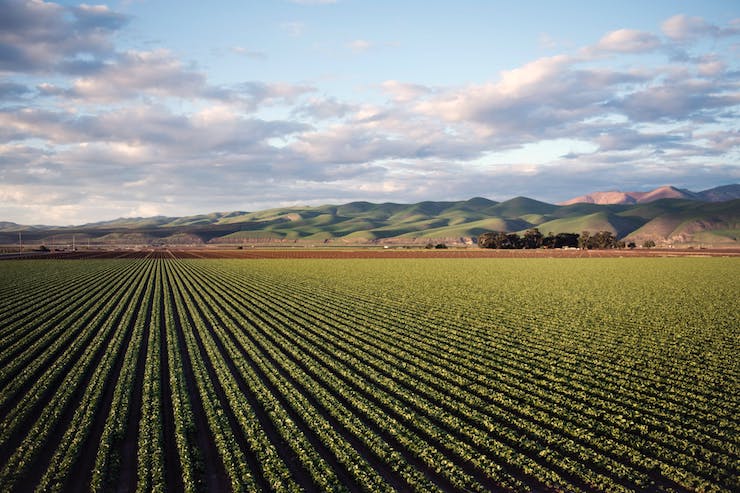
When the use of commercial drones started to rise a few years ago, most people thought it would mean drones would be used for photography, filming, emergency response, and eventually deliveries. It came as a huge surprise that one of the biggest users of commercial drone technology has been the agricultural industry. Agriculture is an extremely labor intensive industry. Finding the right people to work among crops becomes harder each year. Drones have been able to step in and go beyond filling the gaps for countless farmers, without compromising job security.
Drones are being used to closely monitor crops and collect data pertaining to the crop’s health. The drones can get up close enough to see what crops are being effected by pests, or diseases. The drones can monitor soil health and hydration levels too. Drones are also being used to treat crops with chemicals. Once a drone has been used to analyze crops, a drone specifically outfitted to carry pesticides can spray the appropriate chemicals, a job that is often deemed dangerous to be done manually. This same drone can be used to water plants if needed. Drones can be used by farmers to keep track of livestock, even corralling animals at times. Drones are even being used on farms as security measures to prevent theft.
The amazing thing about how these drones are assisting the agriculture industry is that they do all this work without compromising human labor. Farmers have such a hard time finding reliable employees, that these drones are allowing farmers to maintain their current employees without struggling to get work done. The drones help keep workers safe by handling chemicals that can be dangerous. The drones also are able to complete tasks in a matter of minutes or hours that could have taken days or weeks to do manually. But now that commercial drones are becoming more popular across a variety of industries, the agriculturists using drones may face a backlash.
The FAA has registered millions of commercial drones over the last few years. With this many drones in use, it has become critical for the FAA to be aware of any drone in the air at any given time. The airspace over the United States of America is the most crowded airspace in the world. Having a way to identify all drones in the air will only help to keep this ever growing space safer. One proposed means of doing this is for all commercial drones to be equipped with a device that transmits a radio signal.
This device is similar to what manned aircraft already use to be able to maintain safe flying practices. To transmit the radio signal the device on the drone would need a wireless internet connection. Once the connection is established, the device transmits the drone’s unique identification number, alerting authorities that it is in the air, and it’s exact location. For nearly all commercial drone applications, this is a brilliant idea. It sets a precedent for air safety control for manned and unmanned aircraft. But for many farmers, they are in a unique position that this new protocol could hurt their drone missions.
According to the American Farm Bureau Federation (AFBF), 29% of farms and ranches in the country do not have access to WiFi. This means that legally they would not be able to fly their drones over their fields. The AFBF went on to state, “Requiring drones to connect to the internet and broadcast a signal would remove one of the newest tools in the toolbox for farmers and ranchers during a time when they have already seen a drastic 50% decline in net farm income in the last four years.” An industry that has been struggling, and has finally found a tool to ease that struggle, may now be back to square one.
What can be said about how the FAA is facing challenges concerning drones is that they do take exemptions into account. In many situations a drone pilot can apply for an exemption, for example being allowed to fly at night time or at certain altitudes while in restricted airspace. The majority of fields that would be in question where farmers use drones do not encroach on restricted airspace to begin with. It is quite possible that with this understanding the FAA could waive the necessity of the WiFi dependent device for agriculture drones. No decisions have been made yet, but the AFBF is currently working with the FAA to find a way to make commercial drone operations possible for farmers regardless of internet access.
|